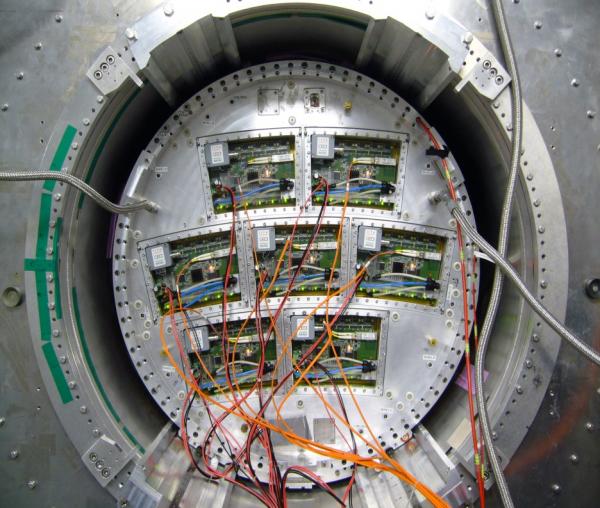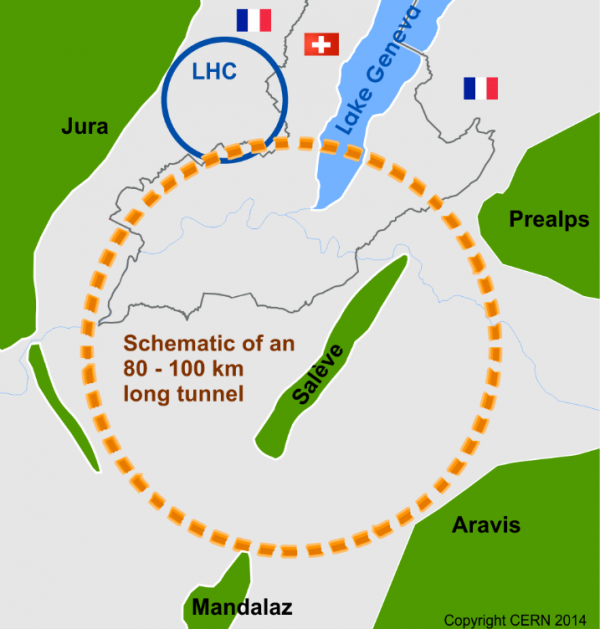The International Linear Collider (ILC) is one of the collider projects envisioned as the next large machine for particle physics, and the in-depth study of the electroweak symmetry breaking sector.
The ILC is a linear electron-positron collider located in Japan, whose physics programme spans several decades, starting around 2030. In a first phase the ILC will operate at an collision energy of 250 GeV, for the precise study of the properties of the Higgs boson produced in association with a Z boson. In subsequent phases, the energy will be pushed to 360 GeV, for precise measurements of the top quark at the pair production threshold, the at 500 GeV and above, for the study of the Higgs boson produced by vector boson fusion and the Higgs boson pair production. The ILC displays a strong discovery potential and is complementary to the HL-LHC in terms of sensitivity to the physics beyond the Standard Model.
In the past fifteen years, Irfu engineers have played a key role in the selection of the cryogenic acceleration technology for the ILC. Recently, in the context of the XFEL project at DESY in Germany, Irfu and its partners have demonstrated the production and assembly of a large number of cryomodules presenting the accelerating fields that are required for an ILC (above 25 MV/m).
The detector R&D led at Irfu for the ILD experiment at the ILC is focused on the development of a TPC tracking detector with a micro-pattern gas detector (MPGD) readout. The considered MPGD is Micromegas, a technology that was initiated by Irfu physicists and engineers.
The RD51 Collaboration at CERN, in which Irfu physicists have a leadership role, is a R&D effort devoted to the development of the MPGD technology for particle physics detectors at future colliders.
FCC (Future Circular Collider) is an R&D effort at CERN devoted to investigating the concept of a proton-proton collider of ultra-high energy that could take over HL-LHC at the 2035 timescale. With the objective of reaching energies as high as 100 TeV (to be compared to the nominal LHC energy of 14 TeV) the FCC project envisions digging a circular tunnel of 80 to 100 km in circumference in the Geneva area. In a first phase known as FCC-ee, such a tunnel could host an high-luminosity electron-positron collider for the precision study of the Higgs boson at the HZ threshold and the pair production of top quarks at threshold.
Les physiciens du SPP étudient les configurations magnétiques et les concepts de détecteurs capables d'analyser des collisions de protons à de telles énergies. Dans le cadre de FCC-ee, ils envisagent aussi la possibilité d'utiliser un détecteur de type TPC avec une lecture MPGD, en se penchant notamment sur le problème spécifique des distorsions dues au retour des ions dans la zone de dérive.
SPP physicists and SACM engineers investigate possible magnetic configurations and detector concepts capable of analysing proton collisions at such high energies. In the context of FCC-ee, they consider the possibility of using a TPC tracker with MPGD readout, focusing on solving the specific problem of distorsions due to return of ions in the drift area.
The ILC/ILD SPP group gathers four physicists and a PhD student. The group leader is Paul Colas.
- Group Leader :
- Paul Colas (also in RD51)
- Paul Colas (also in RD51)
- Physicists :
- Marc Besançon (also in CMS)
- Serguey Ganjour (also in CMS)
- Maksym Titov (also in RD51 and CMS)
The FCC proto-group at SPP gathers seven physicists :
- Physiciens :
- Roy Aleksan (coordinator)
- Florian Bauer (also in Atlas)
- Laurent Chevalier (also in Atlas)
- Fabrice Couderc (also in CMS)
- Elizabeth Locci (also in CMS)
- Boris Tuchming (also in D0)





